NYC’s Forgotten ‘War on Christmas Trees’
Discover how an obscure holiday crackdown affects festive street vendors today!



Every year, floods of sports enthusiasts travel to Flushing to catch a game at Citi Field or the USTA Billie Jean King National Tennis Center for the U.S. Open. Beyond its sports stadium, however, the neighborhood stands as a cultural hub, home to various ethnic communities, killer food options and a wide array of commercial and retail shops. This is especially true of Downtown Flushing, which is centered around Main Street in Queens. It’s where you can find $1 dollar dumplings — and that alone should give you enough reason to go but there are plenty more secrets to uncover in this neighborhood.
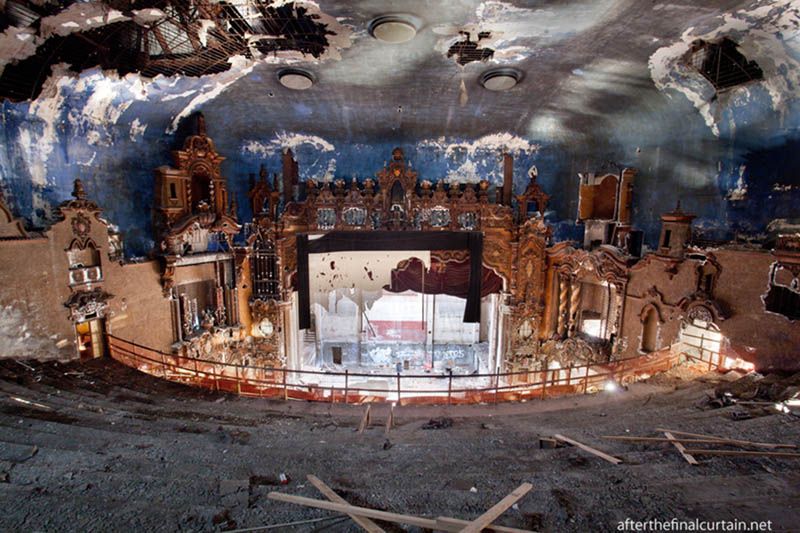 Photo via After the Final Curtain
Photo via After the Final Curtain
We obviously have a thing for abandoned and rehabilitated movie theaters. One such building can be found on 135-35 Northern Boulevard. The 3000-seat RKO Keith’s Theater, originally called the Keith-Albee Theatre, opened Christmas Day, 1928 at 1:00 PM. Built by the famous theater architect Thomas Lamb in the “Mexican Baroque” style, the movie palace has one of the few surviving “atmospheric” theater designs with a blue painted ceiling containing electric lightbulbs for stars and projected clouds.
At its heyday, the theater served the neighborhood with a wide variety of entertainment including vaudeville, organ recitals, orchestras, magicians, comedians, and full-length feature films — all for only 25 cents. In the latest round of development news, the RKO Keith site will be developed into a 17-story residential tower which will preserve the landmarked lobby interiors.
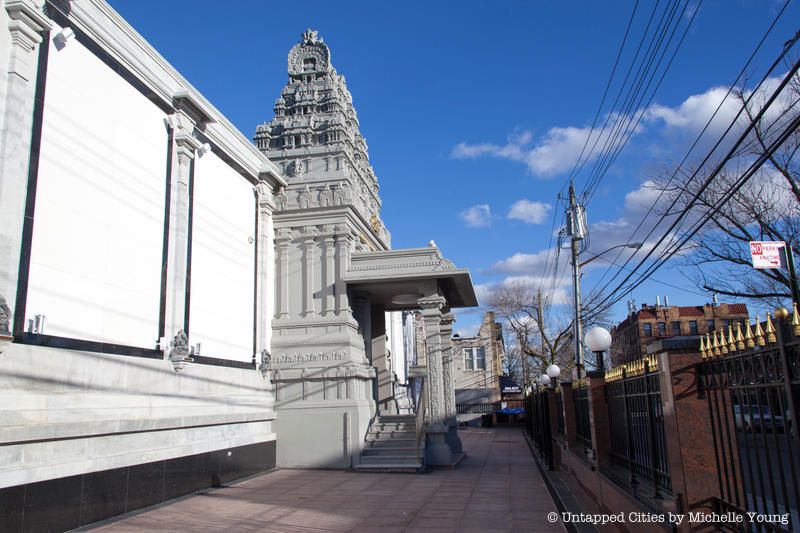
Across the street from a row of residential houses in Flushing, Queens, there’s a large and seemingly out-of-place building with entrances so intricately carved they look like they belong attached to an Indian temple. This building is the worship center Ganesh Temple, and is home to the Hindu Temple Society of America. As one of the oldest and largest immigrant-founded Hindu temples in the Untied States, it attracts hundreds of worshippers each week.
Ganesha is the widely-worshipped elephant-headed Hindu deity who is known as a remover of obstacles, a god of new beginnings, a purveyor of wisdom and intellect. In 2009, when the temple’s stone deity statues were reconsecrated (supposedly infusing divine energy into them), the guest of honor was Minnie, a 37-year old Indian elephant who was colorfully adorned for the occasion. She was fed mangos inside the temple, just as the cow that had joined the group of worshippers on another day of the consecration was fed bananas, keeping with the Hindu belief in respect for and the divinity of all living things.
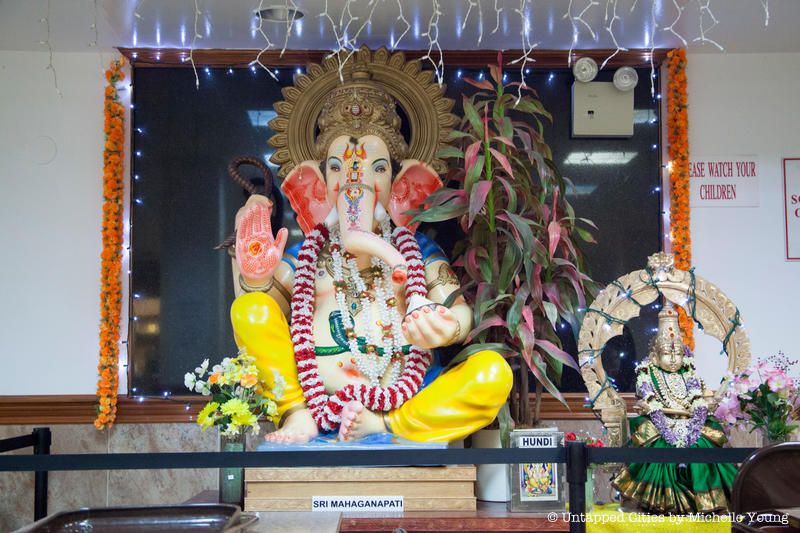
If deity worship works up an appetite, you can make your way down to the temple’s basement. Tucked away there is the popular Ganesh Temple Canteen, an inexpensive, vegetarian South Indian cafeteria which warranted an Anthony Bourdain visit. If selling food in a temple basement seems sacrilegious (if only from a Western standpoint), note that proceeds from the restaurant benefit the Hindu Temple Society of America, and keep places like the Temple of Ganesh running and well-maintained.
Read about this and more hidden restaurants and bars in NYC in the book NYC Hidden Bars & Restaurants written by the Untapped Cities team.
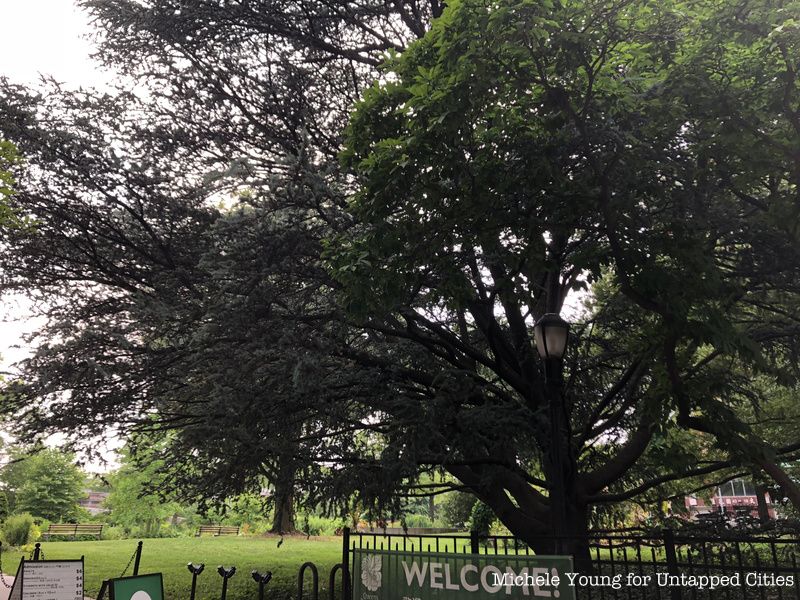
Most New Yorkers are familiar with the New York Botanical Garden in the Bronx and the Brooklyn Botanical Garden, but Queens has its very own floral oasis, which has been in operation since the 1939 New York World’s Fair. The Queens Botanical Garden first had its start as a five-acre exhibit called “Gardens at Parade,” which was so well-received by the public that it was ultimately preserved and renamed the “Queens Botanical Garden Society” in 1941. It has since expanded and was moved to the northeast corner of Flushing-Meadows Corona Park to clear room for the 1964 World’s Fair. Today, the Botanical Garden stretches 39 acres, offering public access to thematic gardens and variety of horticultural programs.
As a lasting testament to its origins, the two blue atlas cedars that frame the tree gate sculpture at the Garden’s Main Street entrance were taken from its original 1939 site.
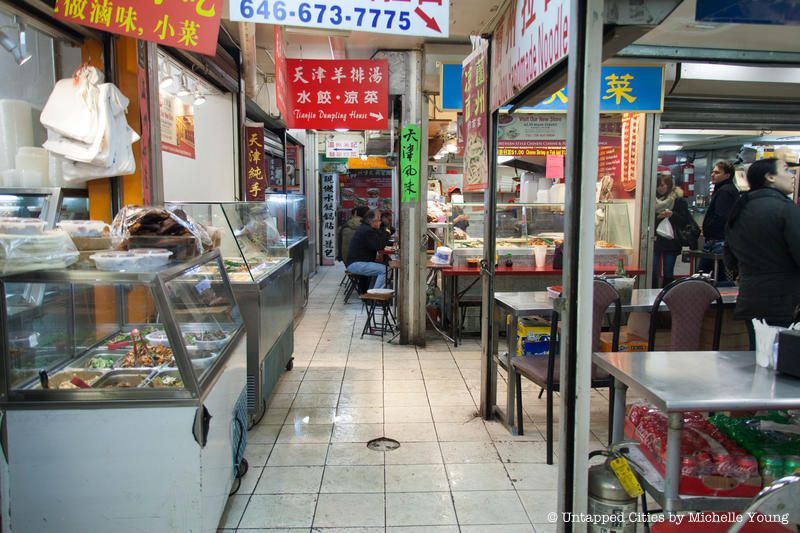
If you don’t know exactly what you’re looking for, you’ll likely miss the entranceway to the Golden Mall. The Golden Shopping Mall, a street-level food court, sits directly above the Golden Mall, and for our purposes is not where you want to be. Its storefront real estate dwarfs the small portal into this underground society of traditional food. You’ll want to look for the entrance pictured above, which will take you down a steep set of aging stairs into the basement, where a culinary world you’ve never seen the likes of before awaits.
Germaphobes and neat freaks be warned: the entrepreneurs in the Golden Mall are all about food, not presentation. The basement is literally packed with tiny food vendors, and its hallways are undeniably dirty, cramped and claustrophobic. “Grade Pending” signs dotting the walls are the icing on the “does the New York Health Department know about this place?” cake. I urge you, however, to overlook what you see, and instead embrace what you taste. After all, locals and world-renowned chefs eat here all the time, and don’t seem to mind at all.
See our photographic journey of the Golden Mall here.
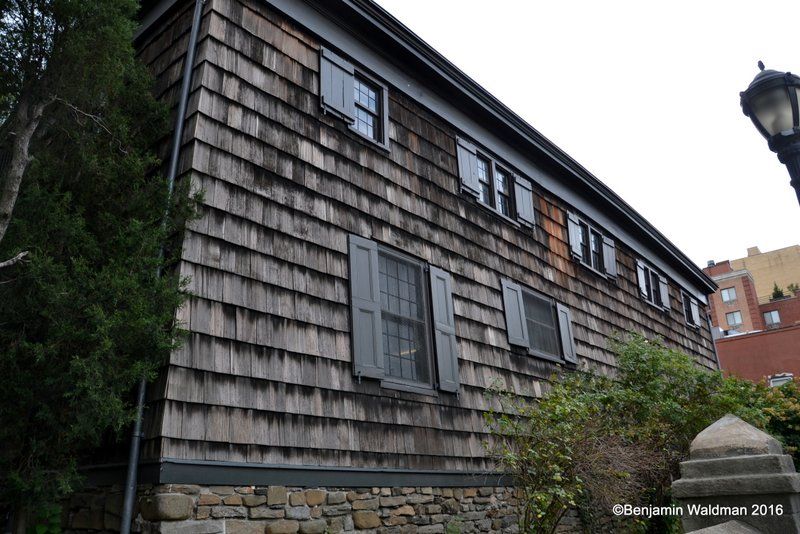
The Old Quaker Meeting House on 137-16 Northern Boulevard might seem unassuming from the outside, but the meetings that took place underneath its hand-hewn timber ceiling beams were momentous throughout American history. From producing the earliest documented support for religious freedom in America to helping shape the beginnings of the abolitionist movement, the Religious Society of Friends’ has remained steadfast in their struggle against religious intolerance, slavery, injustice, and violence over the past 300 years.
Built by John Bowne and other early quakers in 1694, The Old Quaker Meeting house still serves as one of the oldest active houses of worship in the United States, with notable guests including George Washington, John Woolman, and William Penn. It also earned national and city landmark status in 1970 for its 17th century ecclesiastical frame structure of medieval design, one of few in the nation and last of its kind in New York. Be sure to catch a tour of the meeting space every Sunday from 12-12:30pm and take a walk by John Bowne’s house around the corner (the second oldest building in New York City!).
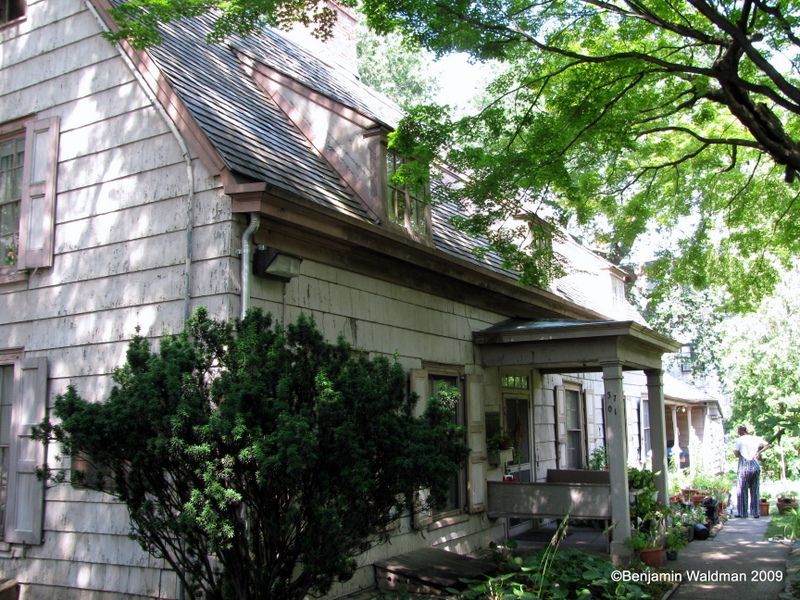
The John Bowne House

Alongside the Queens Botanical Garden, several attractions were developed for the World’s Fairs in Flushing Meadows-Corona Park. We previously reported on the ruins of the New York State Pavilion, the two Westinghouse Time Capsules to be excavated in the year 6939, and the expansive Panorama of the City of New York (the world’s largest architectural model), found in the Queens Museum. In addition, there are rumors that a subterranean luxury home/bomb shelter, built for the 1964 World’s Fair and buried between the Hall of Science and the Port Authority Heliport, may still exist (although that has recently been refuted in the latest round of research).
The underground home was supposedly demolished after the World’s Fair had closed down but many people, such as historian Dr. Lori Walters, believe that part of the exhibit remains and in 2014, she applied for permits in 2014 from the Parks Department to locate the structure using ground-penetrating radar. No news has come since…
Also, check out 10 NYC Remnants of the 1939 World’s Fair and Ruins of the 1964 World’s Fair at Flushing Meadows-Corona Park.
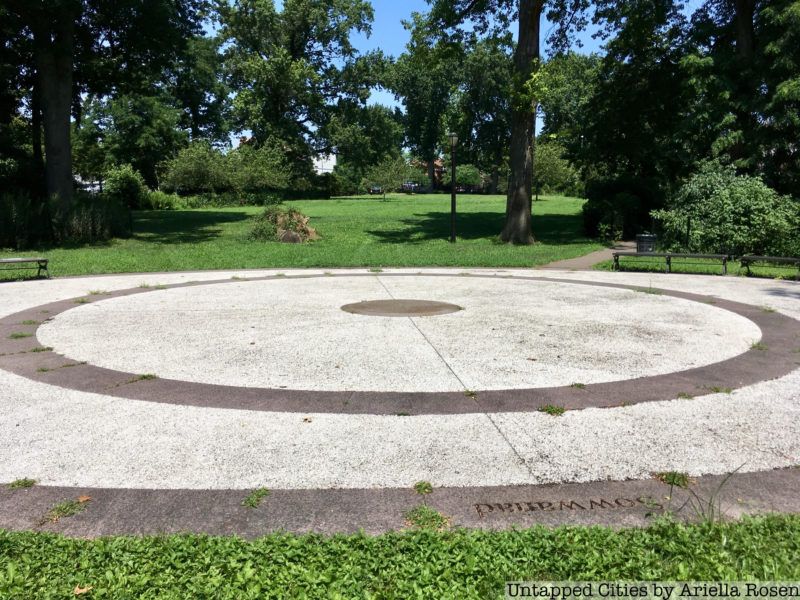
The Olde Towne of Flushing Burial Ground—previously known as the “Pauper Burial Ground,” “Colored Cemetery of Flushing” and “Martin’s Field”—once served as the final resting place for between 500 to 1,000 individuals. The Queens Department of Parks acquired the property on December 2, 1914, and under the leadership of Parks Commissioner Robert Moses, a section of the land was turned into a modern playground in 1938. During the excavation, however, WPA workers discovered lasting evidence of a burial ground.
According to local historian George W. Pople, Flushing had suffered from a cholera epidemic and a smallpox epidemic in the 1840s. In order to ensure that the bodies of the victims would not contaminate church burial grounds, the town purchased a section of land from the Bowne family to be used as a separate public cemetery; it temporary fell out of use with improved hygiene practices, but would be resurrected for use by the African American community in the late-1800s. Up until the cemetery was closed in 1898, the NYC Department of Parks reveals that 62 percent of the buried were African American or Native American (34 percent were unidentified).
A paved area now exists at the site, as well as a historic wall that is engraved with the names from four remaining headstones that were uncovered.
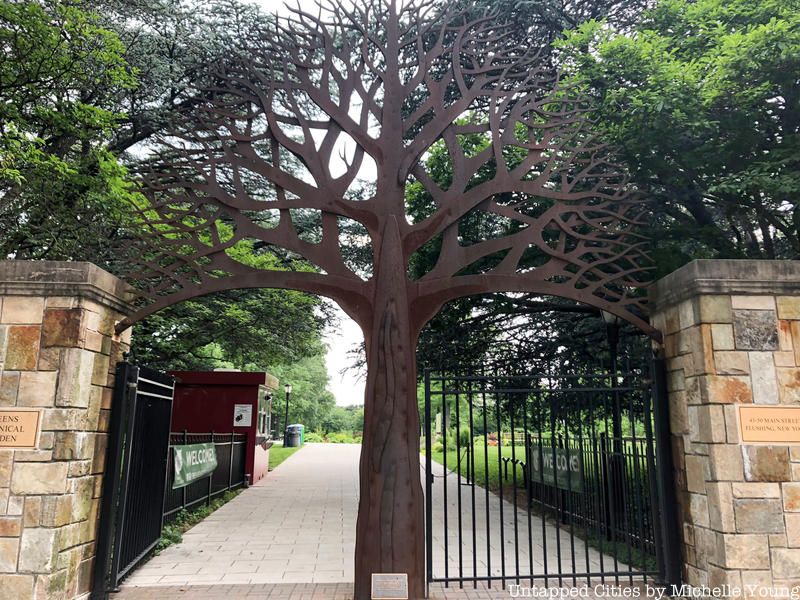
According to the NYC Department of Parks, Flushing was reputed as “America’s premiere horticultural center” throughout most of the 18th and 19th century. In 1794, William Prince established the first commercial tree nursery in North America at the park, on what is now Northern Boulevard (between Flushing Creek and Prince Street), which catered to “exclusive” clientele like King William IV of England, George Washington and Lewis and Clark.
Four decades later, Samuel Parsons would also develop a nursery in the northern section of Kissena Park, which—like Prince’s plot—had a notable customer base (landscape architects Frederick Law Olmsted and Calvert Vaux purchased trees from him to use for Central and Prospect Parks). Today, we have Parsons to thank for introducing a variety of exotic trees to the United States, including the Japanese maple and the weeping beech.
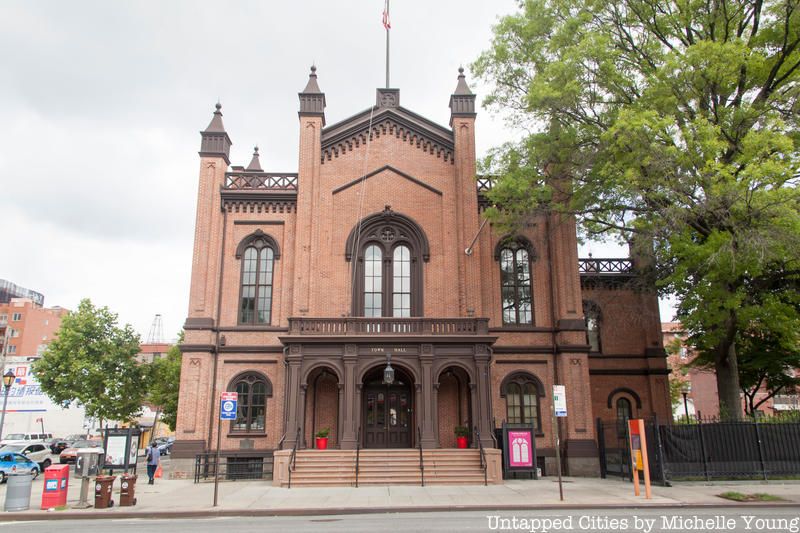
Opened in 1864, during the second year of the Civil War, Flushing Town Hall served the community with a multitude of purposes, including a mustering site for Union soldiers, a bank, jail, a grand ballroom, a public assembly hall, a space for light opera and traveling theatrical productions, a house for civic offices, and finally a courthouse until the mid 20th century; it’s also an affiliate of the Smithsonian Institution in Washington, D.C.
The town hall received landmark status in 1962 and was placed on the National Registry of Historic Places in 1972 for its early Romanesque Revival architectural style. However, the building fell into disrepair until the Flushing Council on Culture and the Arts was awarded a full-time lease in 1990 along with restoration funding from the NYC Department of General Services.
The Flushing—Main Street station was originally constructed as part of the Dual Contracts between the city and two private companies: the Interborough Rapid Transit Company (IRT) and the Brooklyn–Manhattan Transit Corporation (BMT). The stop opened on January 21, 1928, serving as the eastern terminus for the 7 train line. Up until its construction at the intersection of Main Street and Roosevelt Avenue, the junction of Northern Boulevard and Main Street was considered to be the center of Flushing.
Today, the Flushing-Main Street station invites over 19 million annual visitors, making it the 12th busiest station system-wide and the busiest station outside of Manhattan (2015).
Next, check out our Architectural Guide to Flushing and read our neighborhood profile of Flushing.
Subscribe to our newsletter